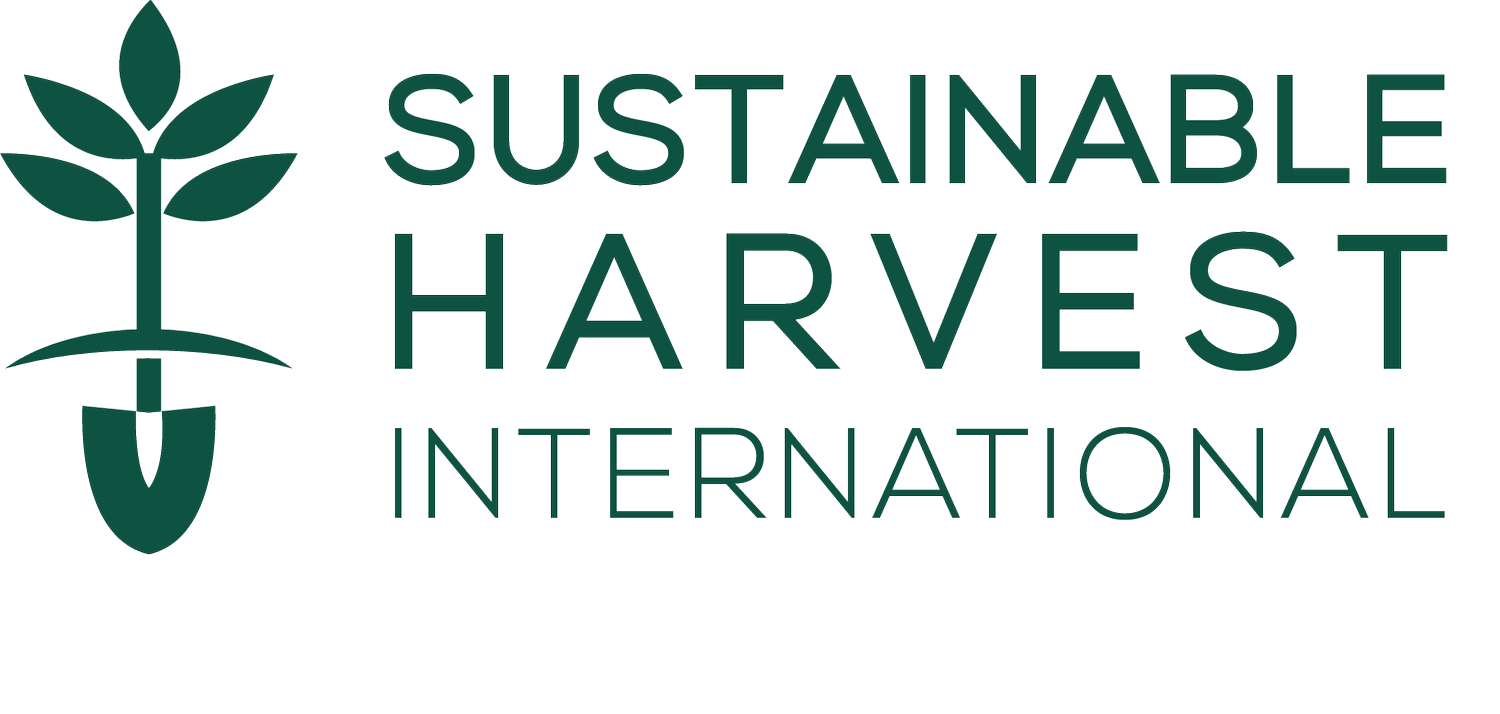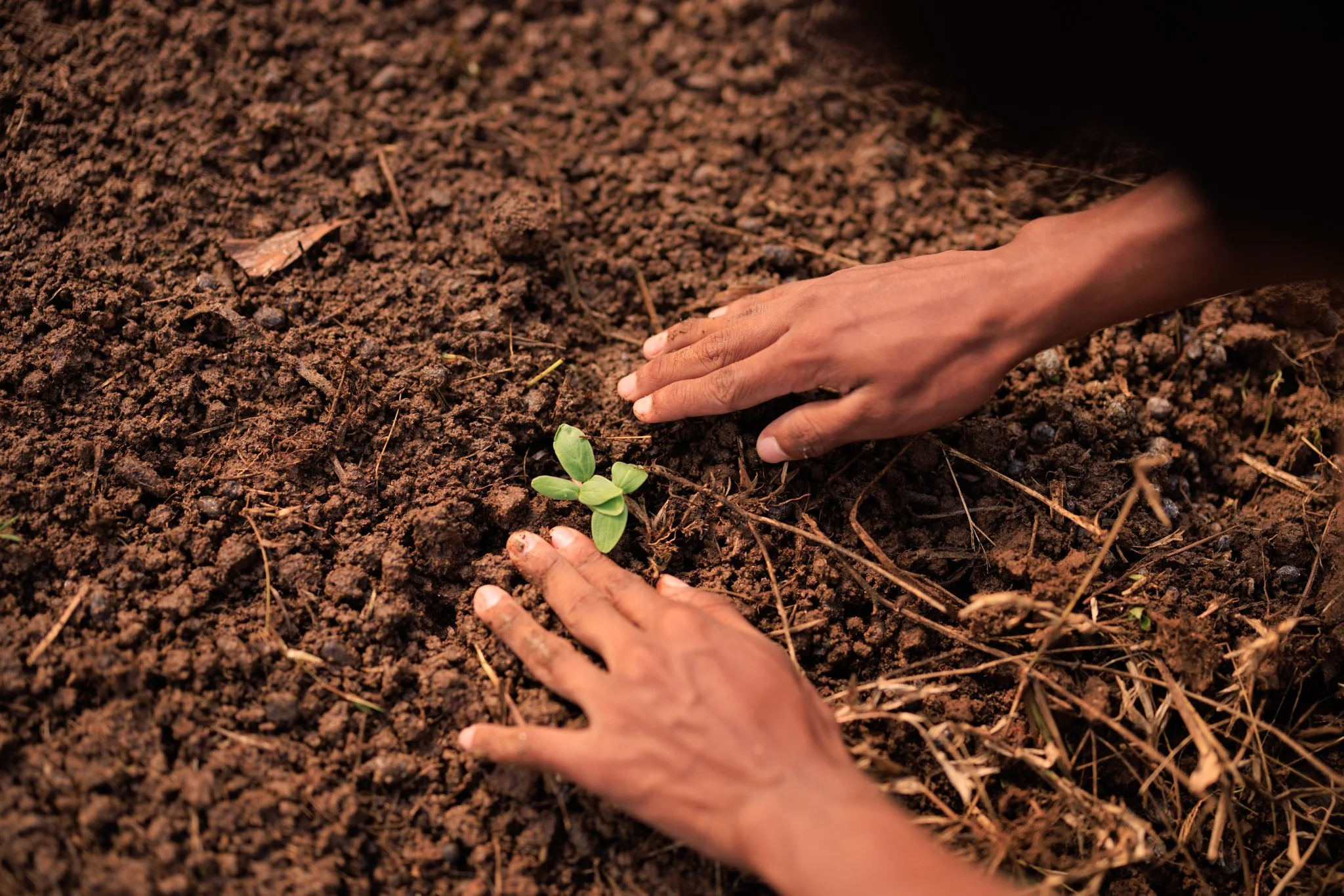Earth Day is a yearly reminder to show gratitude to our environment, raise public awareness, and celebrate the efforts made to preserve and protect our planet.
This Earth Day, the Sustainable Harvest International (SHI) headquarters team has compiled thirteen simple yet meaningful tips for practicing sustainability at home.
We hope these practices will provide you with ideas for incorporating small changes to your day-to-day life that will make a BIG impact!
SHI partnering farmer Abrahan Oviedo Flores and his son are sowing the seeds of hardwood trees that will be used to reforest their land in the El Chaparral community of Meámbar, Honduras.
FOOD SYSTEMS AND SUPPORTING LOCAL FARMERS
SHI partners with farmers to strengthen regenerative farming practices, enhance biodiversity, and restore the ecosystems that underpin healthy, local food systems.
Here’s the sustainable practice that is nearest and dearest to all of our hearts:
TIP #1: SUPPORT LOCAL FARMERS AND SUSTAINABLE FOOD SYSTEMS.
“We guarantee that the food will also be fresher, tastier, more sustainable, and way more nutritious. Bonus: by supporting local farmers, you’ll add dollars back into your local economy, which benefits you and your community”
Today’s dangerously complex and global food systems are key drivers of habitat and biodiversity loss across the planet. The way we produce food has profound impacts on the health of people and the planet. But we can feed the planet without destroying it, so long as we embrace regenerative agriculture and local food systems.
Eating locally means eating seasonally. When grown locally, crops are harvested fresh at their peak ripeness. Unfortunately, to reach our local retail stores from farms around the globe, produce has to be harvested earlier so it can be shipped long distances without going bad. This means farmers must grow varieties based on their durability instead of their flavor. Imagine if our produce was grown for flavor and not to meet the needs of a system that does more harm than good? Sounds downright delicious!
SHI partnering farmers Juan Segura and Elizabeth Rodríguez sell fresh produce at their vegetable stand in the community of El Limón, Panama.
“Every day we’ve got to think about what food we’re going to buy, what clothes we’re going to buy, how we’re going to get around. There are so many ways that we can make a difference… whether it’s buying organic, buying locally-grown, growing our own food, burning less fossil fuels, or how we spend our money. Do we spend it all on ourselves or do we donate to make the world a better place?
”
BIODIVERSITY AND NATIVE GARDENS
Today, there are 40 million acres of monoculture lawns across the United States that offer minimal benefit to local wildlife. Instead, U.S. lawns consume 800 million gallons of gasoline to stay neatly trimmed and 3 million tons of nitrogen-based synthetic fertilizer to stay green. Seems like a huge waste, right?
TIP #2: PLANT NATIVE
Mira Kohl, SHI’s Communications Manager, encourages everyone to garden with native species. Whether you can put a pot on your balcony or convert your entire lawn into a wildlife habitat, use as many native plants as you can!
Native plants are specifically adapted to their local climate and soil conditions. That means that they’ll need less water, less fertilizer, and less maintenance from you! Native plants evolved in tandem with native wildlife, and are uniquely suited to support them.
There are plenty of resources available to help you become part of the solution. In fact, there’s a native plant society in every single state and our guess is that they’d be more than thrilled to walk you through what native plant options are available in your area.
TIP #3: USE MULCH
Flo Reed, SHI’s Founder + Director of Strategic Growth, and Kate Herndon, SHI’s Director of Development, both suggest using mulch in your garden beds. Mulch will add organic material and retain moisture, helping you conserve water. Pro tip from Kate: What’s unwanted waste for your local tree removal company is gold for your soil. Reach out and see if they’d be willing to supply you with free mulch!
Healthy soils are living and breathing ecosystems. In fact, one teaspoon of soil contains more living organisms than there are people in the world.
right at home
Incorporating sustainable practices into your daily life doesn’t have to be complicated. With small adjustments, you’d be surprised by the impact. Here are some more awesome tips that you can do right at home:
TIP #4: REUSE WATER
Do you have a dehumidifier running in your home? Kate knows a whole lot about humidity living in Atlanta, Georgia, and recommends you reuse that water for your indoor and outdoor plants!
TIP #5: OPEN UP YOUR WINDOWS
Instead of running your A/C and electricity all day, SHI’s Administrative Assistant Jessica Hurtado suggests you try opening up some windows to create a cross-breeze that will cool your home. Open windows will also bring in that natural light during the day!
TIP #6: AIR DRY YOUR CLOTHES
Did you know that a clothes dryer often consumes as much as a new refrigerator, dishwasher, and clothes washer combined? Mira loves opting to hang her clothes out to dry instead of using the drying machine. Despite improvements in energy efficiency, clothes dryers remain infamously power-hungry. Even if you live in a small apartment, there are lots of great contraptions to air dry at home.
TIP #7: GO SOLAR
As a way to offset her energy consumption, Flo and her family have installed solar panels on her house that meet almost all their electricity needs! They also use solar energy for most of their water heating. In addition, Flo has recently purchased an electric car– which is mostly powered by her solar panels.
TIP #8: DITCH THE CAR + GRAB A BIKE
Elliott Powell, SHI’s Executive Director, opts for biking as much as he can. In fact, you’ll often catch him biking around New Orleans with his two young girls en route to school, the park, or a Mardi Gras parade.
TIP #9: REDUCE FOOD WASTE
Jessica suggests taking a regular inventory of your fridge for any food items that may be going bad and planning an easy meal. Some ideas for easy “dump” meals include soups, stews, smoothies, and casseroles.
TIP #10: COMPOST FOOD SCRAPS
Chloe Hurtado, SHI’s Communications Intern, suggests starting a small compost bin where you can discard food waste and scraps. Eventually, you can use this compost to feed your gardens and keep your soil happy!
Doribeth López from the community of Aguas Claras in Panama uses SHI’s wood-conserving stove, reducing her usage of firewood by 50%.
DON’T TRASH THAT!
Being regenerative means leaving things better than you found them. Instead of contributing more and more trash to landfills, we all need to reduce our consumption and reuse whenever possible. Here are some ideas to support your efforts to reduce and reuse:
TIP #11: DON’T THROW AWAY, PASS IT ON
Before you throw something away, consider whether someone else could use it. If so, Jessica suggests joining mutual aid groups on social media where you can easily advertise and find a new home for your old belongings.
TIP #12: UPCYCLE
Upcycling is the perfect way to regenerate “old” or “un-useful” items into something creative and useful! Challenge yourself to “upcycle” things like furniture. Beyond saving money, you’re also saving the planet a whole lot of grief!
TIP #13: BUY SECOND-HAND
Both Jessica and Mira are consummate thrifters and recommend "poppin’ tags” at your local thrift store. Did you know that the fashion industry is responsible for 10% of the world’s carbon emissions and consumes 10% of all water used industrially worldwide? Or that toxic chemicals used in clothing manufacturing often end up in our oceans and waterways with long-term impacts on marine life and human health? And we haven’t even started to discuss the terrible working conditions in textile sweatshops worldwide. Buying second-hand is easy, fun, sustainable, and ethical!
SHI partnering farmer Alexis Hernández and his family in the community of Cerro Corral, Panama reuse whatever they can. Even this worn-out soccer ball has renewed purpose as a container for growing celery!
“
Just think, every day we have 1,000s of opportunities to choose something that makes the world a little better. None of us get it 100% right but if we all do the best we can and just think about it, think a little more broadly, then I think we will make a tremendous difference.”
This blog post was edited and compiled by Chloe Hurtado, SHI’s Communications Intern.








